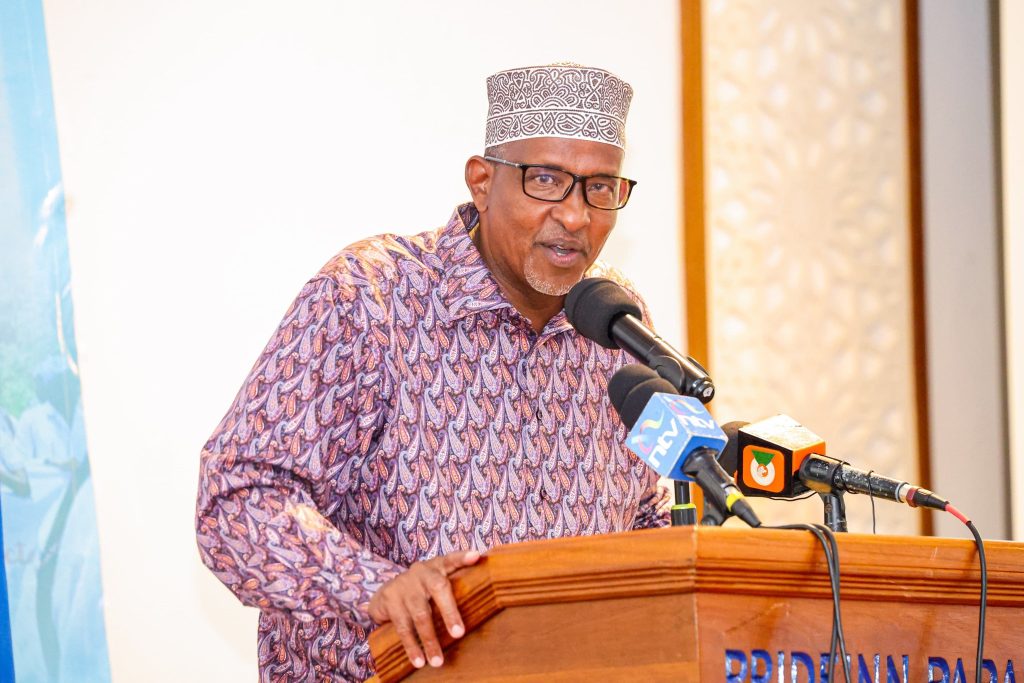In the shadowy underbelly of Nairobi’s Mukuru kwa Njenga slum, where poverty and desperation intertwine like the plastic bags choking the Kware dumpsite, a gruesome discovery in July 2024 shattered the fragile peace. Nine dismembered female bodies, wrapped in sacks and discarded like refuse, unearthed a horror that gripped Kenya. The prime suspect, Collins Jumaisi Khalusha, a 33-year-old former boda boda rider, was swiftly arrested and confessed to slaying at least six women, though police later claimed up to 42, including his own wife.
But why question DCI’s KSh 1M reward for Jumaisi? This query echoes the growing unease among Kenyans, who see the September 30, 2025, announcement not as justice served but as a belated smokescreen amid fresh doubts fuelled by a Citizen TV documentary aired the previous night.
The Kware serial killings, as they’ve come to be known in hushed tones across social media and street corners, exposed deep fissures in Kenya’s law enforcement. Jumaisi’s dramatic escape from Gigiri Police Station on August 20, 2024, slipping through a cut wire mesh and scaling walls alongside 12 other inmates, left authorities red-faced.
Eight officers were suspended, and five were charged with aiding the breakout, yet over 400 days later, he’s still a ghost haunting the nation’s conscience.
Fast-forward to now, and the Directorate of Criminal Investigations (DCI) dangles a KSh 1 million bounty, urging tips via hotlines and WhatsApp. It’s a move that, on paper, screams urgency, but whispers of scepticism ripple through online forums, where users dissect every detail like forensic experts in a low-budget thriller.
At the heart of this unease lies the Citizen TV exposé, “Shadows of Kware”, which premiered on September 29, 2025, and quickly amassed views rivalling viral protest anthems.
The hour-long piece didn’t just recount the body count; it humanised the victims, young women from the slums, many in their late teens or early 20s, lured by promises of work or love, only to vanish into Jumaisi’s alleged web of terror. Interviews with grieving families painted vivid portraits: a mother clutching faded photos of her daughter, a sibling replaying voicemails that end in eerie silence.
Did Collins Jumaisi targeted protesters? Kware victims linked to 2024 protests
But the documentary’s bombshell? Subtle hints that not all roads lead to a lone serial killer. Forensic anomalies, like toothpaste smeared under victims’ eyes, a tactic Gen Z protesters used during the 2024 anti-finance bill demos to counter tear gas, suggest some may have been casualties of state crackdowns, their bodies repurposed to bury deeper scandals.
Why question DCI’s KSh 1M reward for Jumaisi? For many, it’s the timing that stinks worse than the dumpsite itself. Over 400 days since the escape, why now? The documentary’s release feels like the spark that lit this fuse, with DCI’s statement dropping mere hours later, as if scripted in a hasty damage-control session.
Kenyans, battle-hardened by years of police impunity, from the extrajudicial killings during the 2024 protests that claimed dozens of lives to the February 2024 walkout of US fugitive Kevin Kangethe from a Nairobi station, aren’t buying the sudden generosity.
Citizens post grainy CCTV stills and eyewitness accounts of unmarked vans prowling the slums during demo peaks. One viral thread from activist @DukeOfSavannah posits: “Think about it—one of the women found at Kware had toothpaste under her eyes… Why would Collins Jumaisi target protesters? Who has a history of kidnapping and killing them?”
The post garnered hundreds of retweets, amplifying the narrative that Jumaisi’s confession, extracted after days in custody, was coerced, as his lawyer John Maina Ndegwa has long argued in court filings.
Delving deeper into the Kware serial killings chronology reveals a timeline riddled with red flags. It began innocently enough: a family’s dream-vision led diver Charles Wambua to the quarry on July 12, 2024, pulling up the first sack-bound torso. By July 15, Jumaisi was nabbed at a Soweto bar, mid-Euro final revelry, his single-room shack yielding knives, ropes, and bloodied clothes just 100 metres from the site.
He allegedly admitted to a ritualistic pattern: strangling, dismembering, and dumping, starting with his wife, Imelda Khamenya, whom he blamed for squandering his micro-business earnings. Yet, as the Africa Uncensored blog “Justice On Hold” details, two accomplices arrested with victims’ phones were quietly released, their statements sealed.
What really happened in the Kware dumpsite murders? Is Collins Jumaisi innocent of protester killings?
Families, like that of missing 19-year-old Amina, now record fresh statements with DCI, but trust erodes with each unheeded plea. Long-tail queries flood search engines these days: “What really happened in the Kware dumpsite murders?” or “Is Collins Jumaisi innocent of protester killings?”
These reflect a user intent baked in doubt, mirroring the documentary’s probing lens. Are the Kware victims linked to the 2024 protests? Netizens connect dots on online forums, where ex-cops and rights lawyers speculate on DNA mismatches and alibi alibis.
One overlooked detail: several bodies bore bruises consistent with baton strikes, not just strangulation, echoes of the June 25, 2024, Parliament invasion where Gen Z stormed the gates, only to face live rounds.
The BBC’s blocked “Blood Parliament” docuseries, halted by authorities in June 2025, further fuels this fire, highlighting how media scrutiny often meets censorship.
Kenyans doubt DCI’s move to rearrest him after over 400 days because history whispers of patterns too convenient to ignore. Remember the 2007 post-election violence, where mass graves were dismissed as tribal feuds? Or the 2024 abductions, where “missing” activists washed up in rivers, ruled suicides? Jumaisi’s case is a prime example of systemic rot. Social media amplifies these voices; Radio 47’s morning show debates the bounty as “too little, too late”, while Ghetto Radio quips, “Hii deal iko aje?” in Swahili slang that cuts through the noise.
Women in Mukuru, organising self-defence patrols, share stories of nighttime fears, wondering if the real predator wears a uniform. As the KSh 1 million reward circulates on billboards and WhatsApp forwards, it begs another query: “How effective are DCI rewards in capturing escaped serial suspects?” Past bounties, like the vague “significant cash” dangled post-escape in October 2024, yielded zilch.
Critics argue it’s performative, reassuring the public while insiders tip off the fugitive. Human rights groups like Amnesty Kenya call for an independent probe, citing Article 49 of the Constitution on fair trials, trampled here by alleged torture marks on Jumaisi’s arms, per court photos.

In the end, why question DCI’s KSh 1M reward for Jumaisi? It boils down to a nation weary of narratives that protect the powerful. The documentary’s families, voices cracking with unresolved grief, demand transparency: full forensics, unsealed accomplice files, and accountability for the escape.
Kenyans doubt DCI’s move to rearrest him after over 400 days, not out of malice, but survival instinct, honed by too many unsolved shadows. Until the full light of truth pierces Kware’s darkness, this bounty feels less like a net and more like a noose around justice itself.















